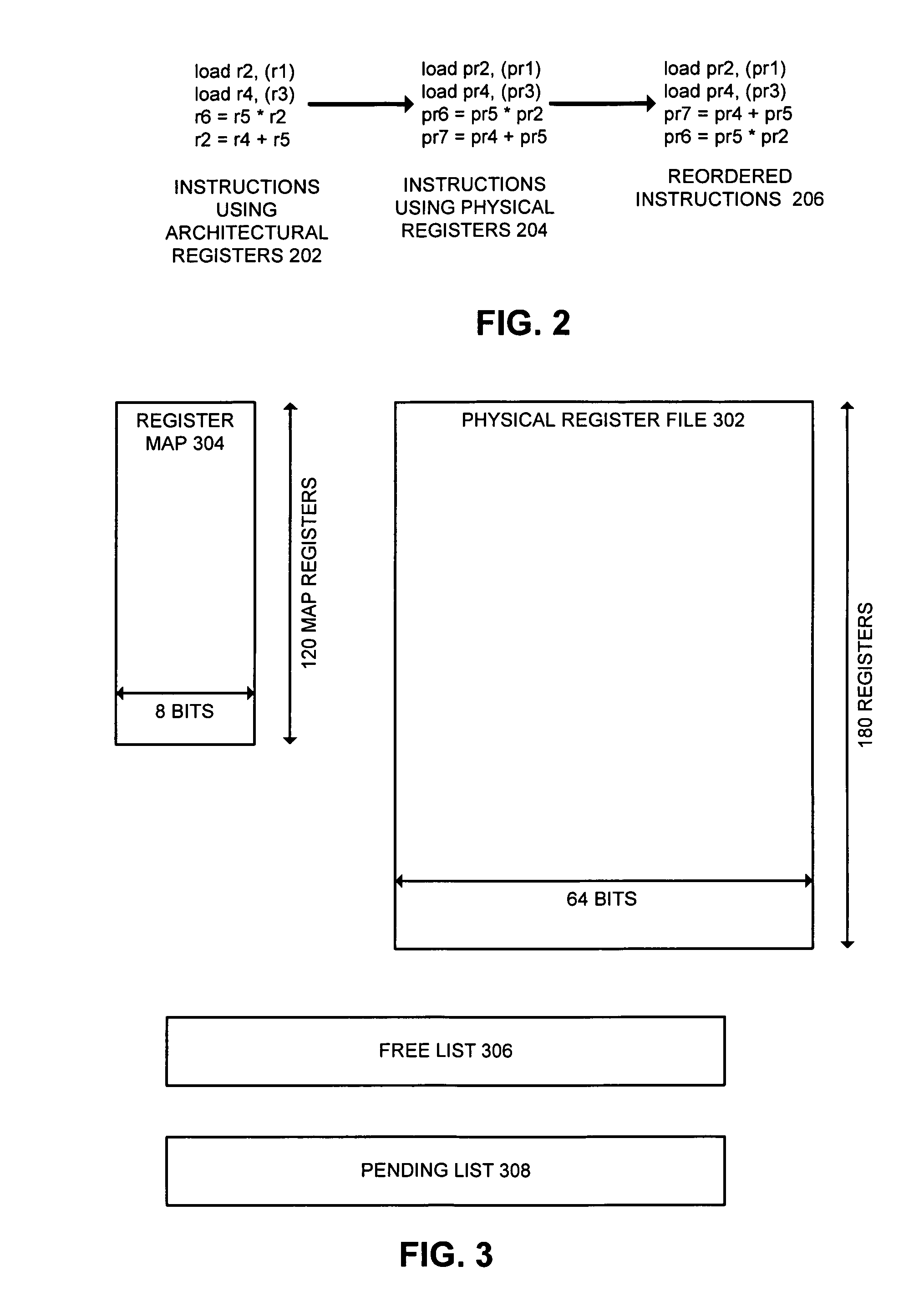Method and apparatus for dynamically allocating registers in a windowed architecture
a processor and dynamical allocation technology, applied in the direction of program control, computation using denominational number representation, instruments, etc., can solve the problems of significant degrading computer system performance, register spilling and filling overhead, and extremely time-consuming to restore register sets to memory
- Summary
- Abstract
- Description
- Claims
- Application Information
AI Technical Summary
Benefits of technology
Problems solved by technology
Method used
Image
Examples
Embodiment Construction
[0033]The following description is presented to enable any person skilled in the art to make and use the invention, and is provided in the context of a particular application and its requirements. Various modifications to the disclosed embodiments will be readily apparent to those skilled in the art, and the general principles defined herein may be applied to other embodiments and applications without departing from the spirit and scope of the present invention. Thus, the present invention is not intended to be limited to the embodiments shown, but is to be accorded the widest scope consistent with the principles and features disclosed herein.
[0034]FIG. 1 illustrates a central processing unit (CPU) 100 in accordance with an embodiment of the present invention. CPU 100 includes fetch unit 102, decode unit 104, register rename 106, issue unit 108, execution units 110 and 112, rename map 114, register file 116, instruction cache 118, data cache 120, window alloca...
PUM
 Login to View More
Login to View More Abstract
Description
Claims
Application Information
 Login to View More
Login to View More - R&D
- Intellectual Property
- Life Sciences
- Materials
- Tech Scout
- Unparalleled Data Quality
- Higher Quality Content
- 60% Fewer Hallucinations
Browse by: Latest US Patents, China's latest patents, Technical Efficacy Thesaurus, Application Domain, Technology Topic, Popular Technical Reports.
© 2025 PatSnap. All rights reserved.Legal|Privacy policy|Modern Slavery Act Transparency Statement|Sitemap|About US| Contact US: help@patsnap.com



